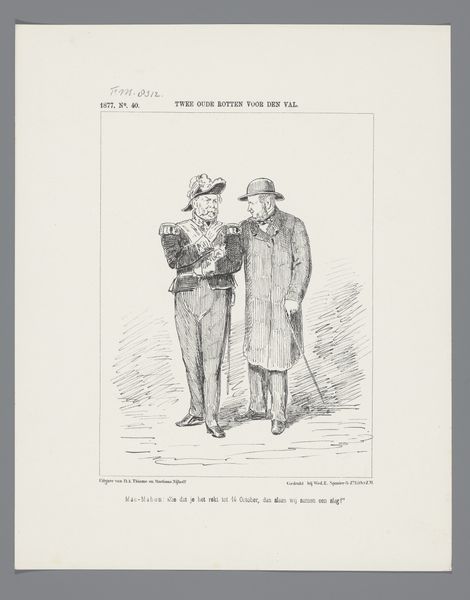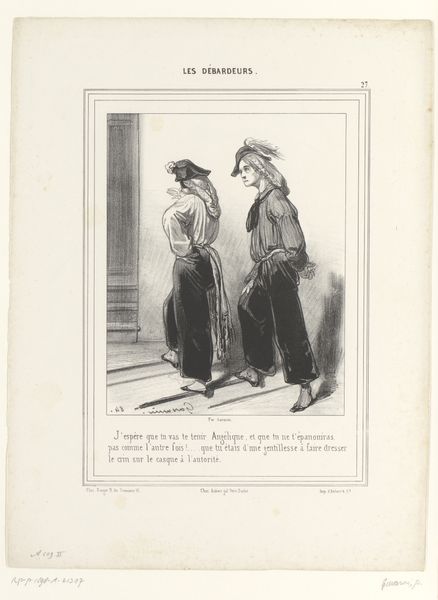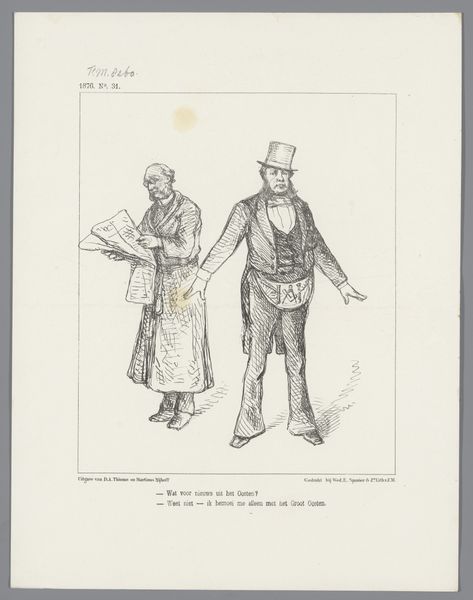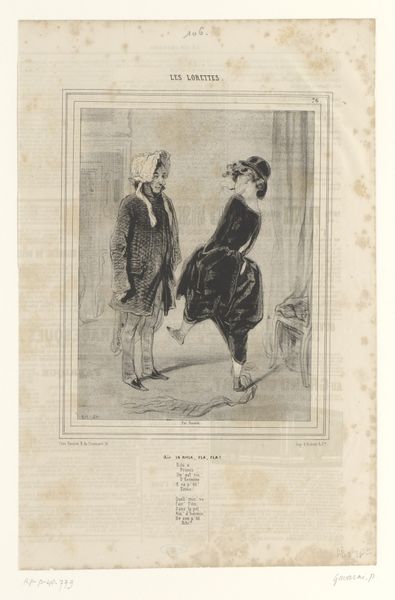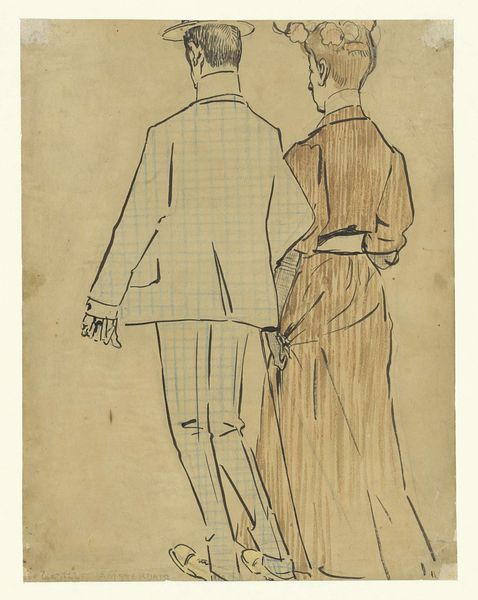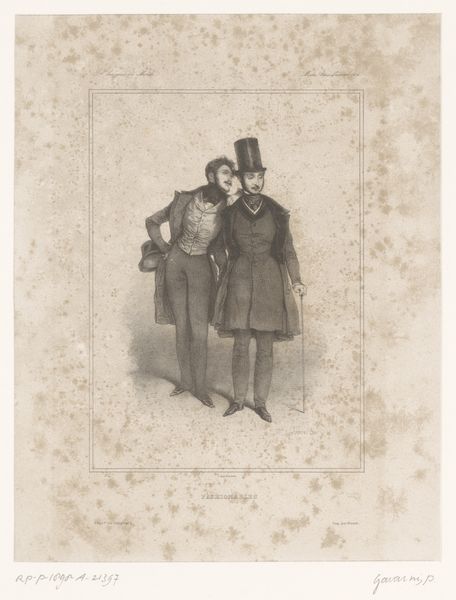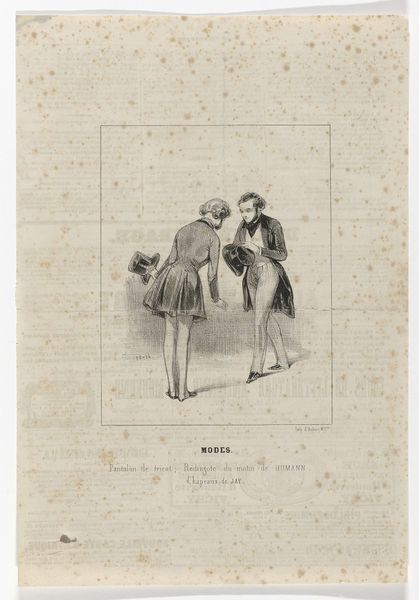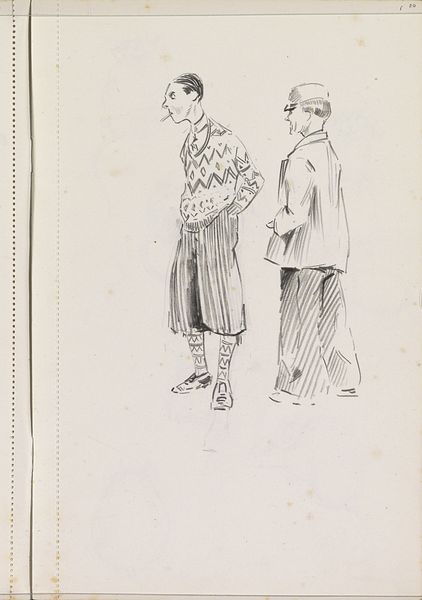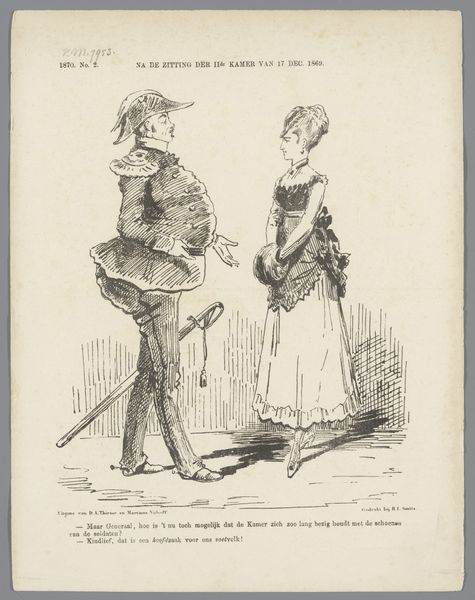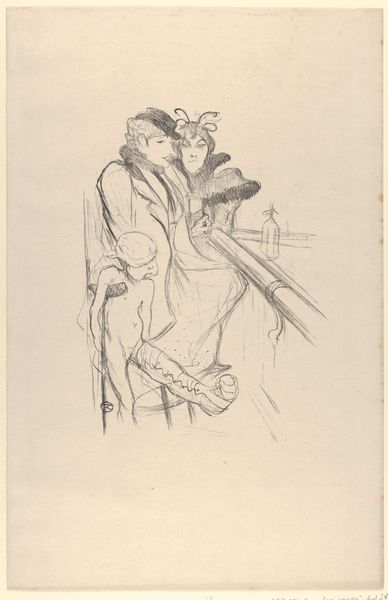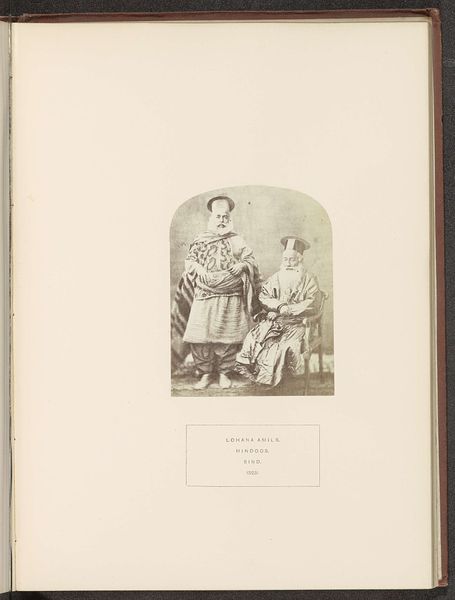
Prostitutie en Politie / Twee steunpilaren van de Maatschappij 1885 - 1909
0:00
0:00
drawing, pen
#
portrait
#
drawing
#
quirky illustration
#
childish illustration
#
cartoon like
#
caricature
#
cartoon sketch
#
personal sketchbook
#
sketchbook drawing
#
pen
#
genre-painting
#
cartoon style
#
storyboard and sketchbook work
#
cartoon carciture
#
sketchbook art
Dimensions: height 379 mm, width 301 mm
Copyright: Rijks Museum: Open Domain
Curator: At first glance, it's a stark, almost humourous composition; the figures feel stiff, posed like paper dolls. What’s your read? Editor: The humour strikes me too, but also a subtle discomfort. We're looking at Jan de Waardt's drawing, made sometime between 1885 and 1909, titled "Prostitutie en Politie / Twee steunpilaren van de Maatschappij" – Prostitution and Police / Two Pillars of Society. Currently held at the Rijksmuseum. It's rendered in pen, a quick sketch. Curator: The title itself is provocative, framing these two figures as essential, if questionable, elements holding society together. The woman, well-dressed but undeniably evocative of the era's "fallen woman" trope, stands beside the officer. Editor: The juxtaposition is the point, isn’t it? Who polices whom? Who supports whom? We need to look at the historical moment to fully understand this piece; the late 19th century saw massive societal shifts and debates surrounding morality, class, and the role of the state. Curator: Precisely. It's a critique of power structures, highlighting the hypocrisy inherent in a society that simultaneously condemns and relies upon these figures. The seemingly innocent "cartoonish" style makes the satire all the more biting, don't you think? There is nothing really childish here. Editor: It makes you think about the function of satire itself. By employing caricature, de Waardt normalizes these societal ‘pillars’, and that familiarity is part of how social commentary gains traction, it certainly sparks more thought than direct vilification would. Curator: And the accessibility, a sketch has an immediacy a painting might lack, the drawing can become a conversation piece on contemporary morals. Editor: It's fascinating how this relatively simple sketch manages to encapsulate so much societal anxiety of the time and continues to echo today. Curator: Indeed, de Waardt's sketch reminds us to interrogate the foundations of power, those ‘pillars’ that might not be as virtuous as we assume. Editor: And to consider the complex interplay of social forces that shape our understanding of morality and governance, a sentiment very relevant still.
Comments
No comments
Be the first to comment and join the conversation on the ultimate creative platform.
